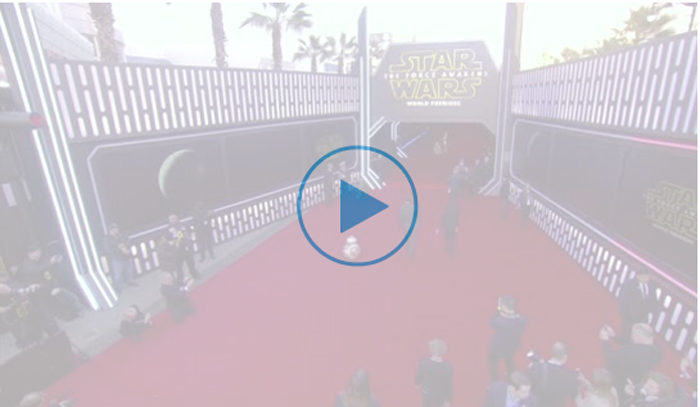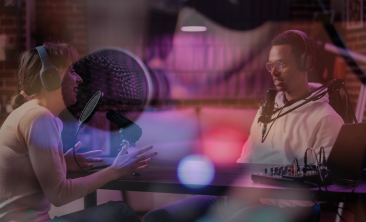
16 Ways to Boost Your Video Storytelling Strategy – Part 1
16 Ways to Boost Your Video Storytelling Strategy – Part 1 https://www.visualstorytell.com/wp-content/uploads/2016/05/May_2016_Post_Header-1024x576.png 1024 576 Shlomi Ron Shlomi Ron https://secure.gravatar.com/avatar/995c0cf093380b90c7704fda398c9addf4e5c605afbc92af5c3f01f67d65aa41?s=96&d=mm&r=g
According to Merriam-Webster, the word video – in case you wondered – is with us since 1937 and originated from the Latin word videre ‘to see.’ So video is translated into ‘I see,’ following the same pattern of Audio – ‘I hear.’
With the increase in broadband and wireless speed and the mass adoption of smartphones – the latest data suggests you should invest in video marketing if you want to reach and engage your target audience. Over half of global marketers surveyed rate video best for delivering the greatest ROI (eMarketer). Videos will be responsible for nearly three-quarters of all internet traffic by the end of 2017 (Syndacast). And in July 2015, Periscope reported that users were watching 40 years’ worth of videos every day during the first 5 months since the service launched. In short, until VR is widely accessible,
In short, until VR is widely accessible, video is your most vivid tactic to engage your audience with sight, audio and a compelling story to authentically deliver your messages. The following is part 1 of 16 ways you could start with video to support a wide range of business objectives in B2C and B2B contexts. Please note this list is by no means ordered by ranking. The main focus here is on various video content types, leaving distribution strategy out of the scope for this post. Treat it as your 2016 Video Storytelling Tactic Stash as you embark on or enhance your journey with video.
1. Explainer Videos – Animation
Objective: Introduce new audiences to your new product or service.
Why they’re effective: Explainer videos are brief online video stories that are designed to explain a product or a service. The customer plays the hero in the story, following the classic journey of backstory, conflict, and victory using the brand’s product. They’re typically placed on a company homepage or a landing page to intercept top-of-the funnel users. In this clip, a fun and child-like cartoon (i.e., likability driver) is used to explain what Pinterest is by describing the long road we’ve all gone through to do a simple task as creating a scrapbook.
2. Explainer Videos – Sketching
Objective: As above.
Why they’re effective: Like their “Animation cousins” above, sketches help to communicate the benefits of a new product or service. In this example for Dayforce HCM, the narration is supported by a simultaneous white board sketching that breaks down complex ideas into a simple step-by-step drawing anyone can understand. The professional, yet raw sketches, packed with fun metaphors help both to simplify and humanize the message.
3. Corporate Video Stories
Objective: Drive brand awareness about your product or service.
Why they’re effective: Corporate video stories allow you to establish an emotional bond with a company product or service through a compelling story. In this clip, Bonomotion Video Agency brings to life the value of SOLO Printing by vividly illustrating the company’s journey; from the founders’ humble beginnings into becoming one of the nation’s largest minority-owned companies.
4. HR Videos
Objective: Inspire new and diverse job candidates to apply to your company.
Why they’re effective: This Apple HR video is currently used on Apple’s LinkedIn Career page. You don’t have to be an Apple to convey the unique culture of your company. This clip works as it’s aligned with Apple’s promise for diversity. Through a mix of eye level shots showing Apple employees from diverse cultures looking straight at the viewer, they convey equality (hey, I am like you) and demand full involvement from the viewer. The outcome is putting a human face about what’s it like to work at Apple and thus, inspire new job candidates to apply.
5. Crowd-Sourced Video Stories
Objective: Promote your product or service by harnessing the creative power of your audience.
Why they’re effective: This is the only tactic on this list that hands audiences both the video producer and video promoter hats. The brand’s job is to prepare the setup and the wow effect story (story making) for audiences to engage and storytell. In this clip, as part of promoting Star Wars: The Force Awakens, Dolby in partnership with Disney, leveraged Videoo to discover what’s trending and build a feed of the Top 100 ‘best of’ social videos, carrying #TheForceAwakens, #StarWars and #SWinDolby. Millions of fans also curated content by watching the Videoo playlist and actively voting up their favorites to influence the playlist ranking which re-orders in real-time for the Top 100+ best videos.
6. Weekly Video Shows
Objective: Drive steady awareness to your product or service.
Why they’re effective: YouTube, launched in 2005 by 3 former PayPal employees and was acquired a year later by Google for $1.65B, has served as the main driving force in leveling the video playing field for 1.3B video fans that are today busy uploading 300 hours of video every minute (source: YouTube)! That means, both production and consumption ends of the equation are now widely accessible to the masses. Today, online video shows have reached a maturity point where Hollywood cannot afford to ignore them anymore. New conferences like VidCon with YouTube as its major sponsor, serves as a vibrant platform for connecting online video celebrities with their fans while studios and TV execs vie for millennial attention to boost exposure to their filmed products. There are also a ton of new talent agencies that now represent YouTube celebrities as digital influencers for hire. In short, grassroots video initiatives turned mainstream. Going back to marketing, Back in 2006, Gary Vaynerchuk was one of the early YouTube adopters who leveraged the power of video as part of helping his family wine business. He produced over 1000 Wine Library TV video shows, where he shared wine tips that attracted 80,000 daily viewers to try different wines. In 2014, Gary started running the weekly Ask Gary Vee Show (this clip), as part of running his social media agency, WaynerMedia. In his show, Gary answers questions about business, marketing, branding, and social media, sent by his loyal fans from around the world through social channels. His approach of constantly providing value to his audience helps keep him top-of-mind as trusted advisor. This was also the premise for his 2013 book Jab, Jab, Jab, Right-Hook (i.e., give, give, give, ask) and his latest book: #AskGaryVee: One Entrepreneur’s Take on Leadership, Social Media, and Self-Awareness.
7. Tutorials
Objective: Educate your audience how to use your product or service.
Why they’re effective: In the day and age where people stop reading manuals, be it for a new software, a home appliance, or even how to assemble an IKEA table, video tutorials have become the go-to destinations where users can actually see step-by-step how to do stuff. In this publicly available clip, Park Howell, a storytelling strategist has created 10 video tutorials where he educates his audience on how to use each of his 10-Step Story Cycle when developing a brand story. The use of key questions helps his audience to easily digest the information and make it actionable. A gated approach for video tutorials (AKA Massive open online course = MOOC), is widely used for eLearning where users pay to go through an online course consisting of series of videos, interactive drills and supporting information. Top examples include Coursera, Udacity and Udemy. Not to say that you cannot convert your own company sales enablement materials into an internal eLearning initiative for your sales team or provide a fee-based online certification program for your customers.
Having started this post with a Latin lesson, now whenever you think about your video strategy, remember it’s not about you, it’s about looking at the world behind your audience glasses. Remember video=I See, what hopefully your audience will think after they’ll see your video. It’s got to be meaningfully personal, and resonate emotionally with your audience in order for your story to change behavior. So when they’ll watch your clip a thought bubble will proudly pop up above their heads, answering these 3 questions per messaging expert and TEDx executive producer, Tamsen Webster:
1) I SEE your point > WHY or what people need to know in order to believe your message.
2) This is so cool > WHAT you’re showing me + triggering a specific emotion.
3) And I am motivated to act > I see the CTA and know HOW to do it!.
And we cannot finish this post without:
8. Event Teasers
Objective: Drive awareness and registration to your upcoming event.
Why they’re effective: Pre-event video teasers help audiences to establish first impression and an emotional bond between speakers and their expertise that go beyond their pretty headshot and stellar bio on the event Website. This clip was created by Ville Aillio from Bond Street Consulting as part of our VSI Stories series. The casual banter about the power of video storytelling between speakers helps bring forward their expertise, personality, and whet viewers’ appetite to learn more.
Check out our 16 Ways to Boost Your Video Storytelling Strategy – Part 2/2!
Need help with your video storytelling? Schedule a conversation today!
- Posted In:
- Case studies
- Story Visualizing
- Videos
- Visual Storytelling
Shlomi Ron
Shlomi Ron is the founder and CEO of the Visual Storytelling Institute, a Miami-based think tank with a mission to bring the gospel of visual storytelling from the world of art to more human-centric and purpose-driven marketing. A digital marketing veteran with over 20 years of experience working both on the agency and brand sides for Fortune 100/500 brands such as Nokia, IBM, and American Express. He started VSI to combine his marketing expertise with his passion for visual stories stemming from his interests in classic Italian cinema and managing the estate of video art pioneer, Buky Schwartz. At VSI, he helps brands rise above the communication noise through visual storytelling consulting, training, and thought leadership. Select clients include Estée Lauder, Microsoft, and Cable & Wireless – to name a few. He currently teaches Brand Storytelling at the University of Miami’s Business School. Thought leader and speaker at key marketing conferences. He is also the host of the Visual Storytelling Today podcast, which ranks in the top 10 best business storytelling podcasts on the Web. His book: Total Acuity: Tales with Marketing Morals to Help You Create Richer Visual Brand Stories. Outside work, he is a nascent bread baker, The Moth fan, and longtime fedora wearer likely to jive with his classic Italian cinema interest.
All stories by: Shlomi RonYou might also like
4 comments
This site uses Akismet to reduce spam. Learn how your comment data is processed.






Leave a Reply